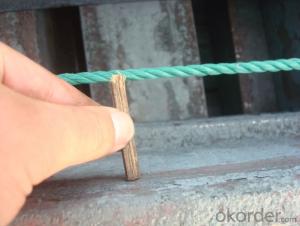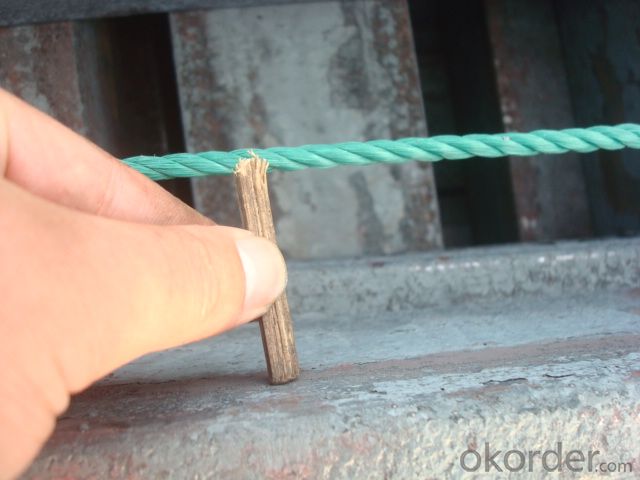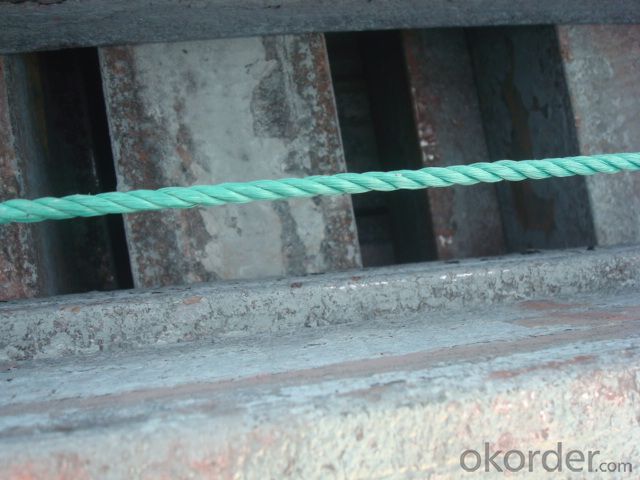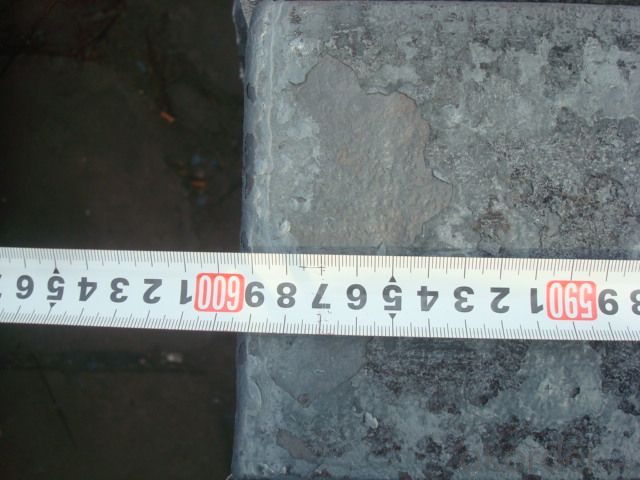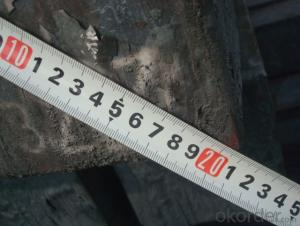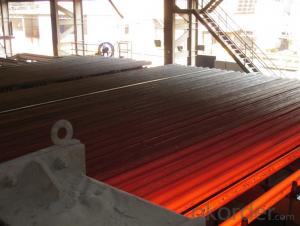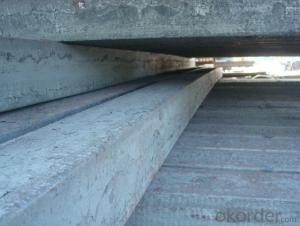Steel Billet Hot Rolled in Amazing Price
- Loading Port:
- Tianjin
- Payment Terms:
- TT OR LC
- Min Order Qty:
- 1000 m.t.
- Supply Capability:
- 50000 m.t./month
OKorder Service Pledge
OKorder Financial Service
You Might Also Like
1.Structure of Steel Billet
Steel billet(ingot) by cogging or breakdown of semi-finished products, is the raw material of all kinds of steel mill. Billet section of square, round, flat, rectangular and abnormity of several kinds of, mainly related to the shape of rolled products.
2.Main Features of Steel Billet
Rectangular billet continuous casting billet and mainly general carbon steel, low carbon low silicon cold-rolled material, high quality carbon structural steel, high strength low alloy steel, special steel, etc.
The billet is mainly divided into two kinds from the shape:
Slab: cross section width and height of the ratio of the larger, mainly used for rolling plate.
Billet: equal cross section width and height, or a huge difference, mainly used for rolling steel, wire rod. ,
Steel billets have distinct characteristics as compared with already furnished steel bars and products. Billets have a specific grain structure, which enables the metal to be processed more intricately. Steel billets are also known for their malleability and ductility, especially when exposed to varying temperatures during shaping and molding.
3.Steel Billet Images
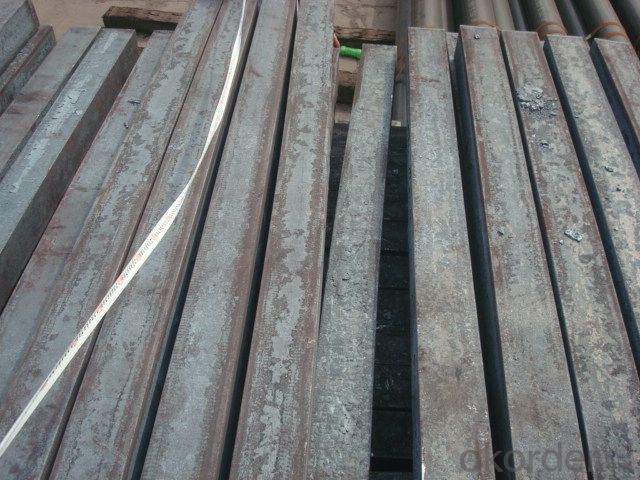
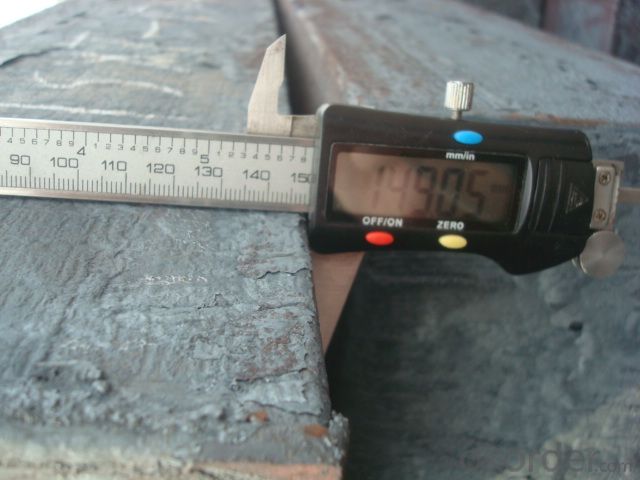
4. Steel Billet Specification
Hot rolled billet steel
Size: 50x50mm-180x180mm
Steel Grade: 3SP, 5SP,Q195,Q235,Q255,Q275 Length:3m-12m
MOQ: 1000MT/size
Payment term: TT or LC
Packing: in bulk , bundle
Shipment: by container , bulk vessel
Packaging Details: bundles with steel strips or as customers's requirements
Delivery time: 15-30 days after the deposit
Loading port:Tianjin, or other port China
Origin :China
Inspection:Third party inspection before loading.
5.FAQ
We have organized several common questions for our clients,may help you sincerely:
1) How about your company?
A world class manufacturer & supplier of castings forging in carbon steel and alloy steel,is one of the large-scale professional investment casting production bases in China,consisting of both casting foundry forging and machining factory. Annually more than 8000 tons Precision casting and forging parts are exported to markets in Europe,America and Japan. OEM casting and forging service available according to customer’s requirements.
2) How long can we receive the product after purchase?
In the purchase of product within three working days, We will arrange the factory delivery as soon as possible. The pecific time of receiving is related to the state and position of customers.Commonly 7 to 10 working days can be served.
3) Can you guarantee the quality of mass production?
Yes, of course. We will send pre-production samples to you for confirmation, after your confirmation we will start mass production. The quality of mass production will be the same as the samples you confirmed to us.
- Q: What are the international standards for steel billets?
- The international standards for steel billets are defined by organizations such as the International Organization for Standardization (ISO) and the American Society for Testing and Materials (ASTM). These standards typically encompass various aspects including chemical composition, mechanical properties, dimensions, tolerances, and surface quality, ensuring consistency and quality across different countries and manufacturers.
- Q: How to purchase suitable billet heating furnace
- Billet heating furnace manufacturers are many, the procurement of cost-effective equipment is the user's best choice. Choice can not be blind, you can not just look at the price, the choice of advice you consult more manufacturers, and then use the exclusion method to determine your final goal. Online can take a look at live video, more reference.
- Q: What are the potential applications of steel billets in the agricultural aftermarket?
- The agricultural aftermarket offers a wide range of potential applications for steel billets. One important use in this industry is the manufacturing of agricultural machinery and equipment. Components such as plows, cultivators, seeders, and harvesting equipment can all be fabricated using steel billets. In the agricultural sector, machinery needs to be durable and robust to withstand the tough conditions of farming operations. Steel billets provide the necessary strength and toughness for tasks like tilling the soil or harvesting crops. Their high-strength properties make them perfect for handling heavy loads and rough terrain. Moreover, steel billets can be employed for constructing storage and handling structures. Steel buildings and structures are resistant to weathering, pests, and fire, making them ideal for storing agricultural products. By using steel billets for the main framework, these structures become durable and long-lasting. Another potential application of steel billets in the agricultural aftermarket is for fencing and livestock handling equipment. Steel fencing is commonly used to secure boundaries, contain livestock, and protect crops. By shaping and welding steel billets, strong and reliable fencing materials can be created. Furthermore, steel billets can be utilized in the production of irrigation systems and water management equipment. Efficient irrigation systems are essential for proper water distribution to crops. Steel billets can be used to fabricate critical components like pipes and valves, ensuring durability and longevity. In conclusion, steel billets have a wide range of potential applications in the agricultural aftermarket. From manufacturing machinery and equipment to constructing storage structures, fencing, and irrigation systems, steel billets offer the strength, durability, and reliability required in the demanding agricultural industry.
- Q: Charcoal classification
- Hard charcoal. By hardwood such as Fagaceae Quercus, Castanopsis trees, secondary birch and etc..Broad-leaved charcoal. Charcoal made from a mixture of hard and soft hardwood.Pine charcoal. Carbon fired from pine or other needle wood. In addition to bamboo and bamboo charcoal burning with shells, stones (coconut shell, peach stone charcoal etc.) wood raw material firing. Charcoal collected from household stoves in the cell known as carbon. If the charcoal is crushed and mixed with proper adhesive, and then pressed, formed and roasted, the deposit is made. According to the burning process of silica and carbon black.
- Q: What are the common surface defects in steel billets during reheating?
- Common surface defects in steel billets during reheating include scale formation, decarburization, and oxidation. Scale formation occurs due to the reaction between the steel surface and the surrounding atmosphere, resulting in the formation of a layer of iron oxide. Decarburization is the loss of carbon content from the steel surface, leading to reduced strength and hardness. Oxidation refers to the reaction between oxygen and the steel surface, causing the formation of iron oxide and potentially weakening the material. These defects can affect the quality and performance of the steel billet if not properly addressed.
- Q: What are the main factors that determine the market price of steel billets?
- The market price of steel billets is influenced by several key factors. Firstly, the demand and supply dynamics play a significant role in determining the market price. If there is a high demand for steel billets and the supply is limited, the price tends to increase. Conversely, if the demand is low and there is an oversupply of steel billets, the price may decrease. Another important factor is the cost of raw materials. Steel billets are primarily made from iron ore, which is subject to price fluctuations in the global market. Increases in the cost of iron ore can drive up the market price of steel billets, as manufacturers pass on the higher production expenses to consumers. Energy costs also impact the market price of steel billets. Steel production is an energy-intensive process, and any fluctuations in energy prices, such as those of coal or natural gas, can influence the final price of steel billets. Additionally, global economic conditions and geopolitical factors can have a significant impact on the market price of steel billets. Economic growth or recession in major steel-consuming countries can affect demand, while trade policies, tariffs, or sanctions imposed by governments can disrupt the supply chain and result in price volatility. Furthermore, technological advancements and innovations in the steel industry can influence the market price as well. Improvements in production processes or the development of new steelmaking techniques can affect the cost of manufacturing steel billets, which can in turn impact the market price. Lastly, currency exchange rates can also affect the market price of steel billets. If the currency of steel-producing countries strengthens against the currencies of steel-consuming countries, it can make the steel billets more expensive for foreign buyers, potentially leading to a decrease in demand and a subsequent decrease in price. In summary, the market price of steel billets is determined by the interplay of supply and demand dynamics, the cost of raw materials and energy, global economic conditions, technological advancements, and currency exchange rates. Being aware of these factors is crucial for both buyers and sellers in the steel billet market to make informed decisions and adapt to changing market conditions.
- Q: What are the different methods of steel billet surface plating?
- There are several methods of steel billet surface plating, including electroplating, hot-dip galvanizing, mechanical plating, and chemical plating. Each method offers specific advantages and is used depending on the requirements of the application. Electroplating involves the deposition of a thin layer of metal onto the steel surface through an electric current. Hot-dip galvanizing immerses the steel billet into a bath of molten zinc to create a protective coating. Mechanical plating utilizes mechanical energy to bond a metal coating onto the steel surface. Chemical plating involves a chemical reaction to deposit a metal coating onto the billet surface.
- Q: How do steel billets come out?
- I. mining1, iron ore2 limestone mine3, coal mineTwo 、 burden preparation1. Iron ore sintering2 coking coal cokingThree, iron: in the blast furnace, sintering iron ore, limestone, coke, iron ore in the iron elements reduced to metal iron, then the product is pig iron.
- Q: What is Alfa carbon? What is beta carbon?
- Alfa is directly connected with the functional groups of carbon atoms of carbon atoms, such as CH3CH2COOH CH2 in which methylene propionate is Alfa carbon carbon carbon atom is the beta carbon atom is directly connected with the functional groups and the connection of the carbon (around Kazakhstan), such as the CH3CH2COOH CH3 propionic acid methyl carbon is the beta carbon
- Q: What are the different types of heat treatment processes used for steel billets?
- There are several different types of heat treatment processes used for steel billets. Some commonly used methods include annealing, normalizing, quenching and tempering, and case hardening. Each process has its own purpose and is used to achieve specific properties in the steel billets.
Send your message to us
Steel Billet Hot Rolled in Amazing Price
- Loading Port:
- Tianjin
- Payment Terms:
- TT OR LC
- Min Order Qty:
- 1000 m.t.
- Supply Capability:
- 50000 m.t./month
OKorder Service Pledge
OKorder Financial Service
Similar products
Hot products
Hot Searches
Related keywords
